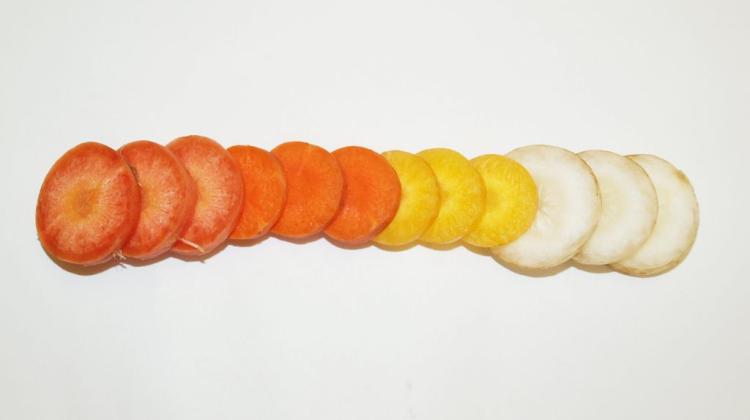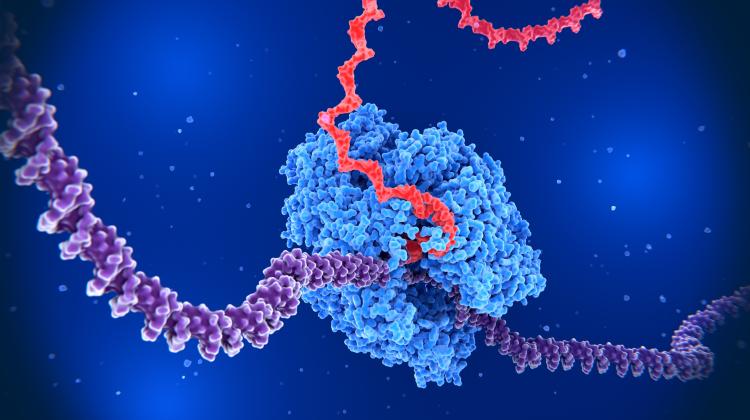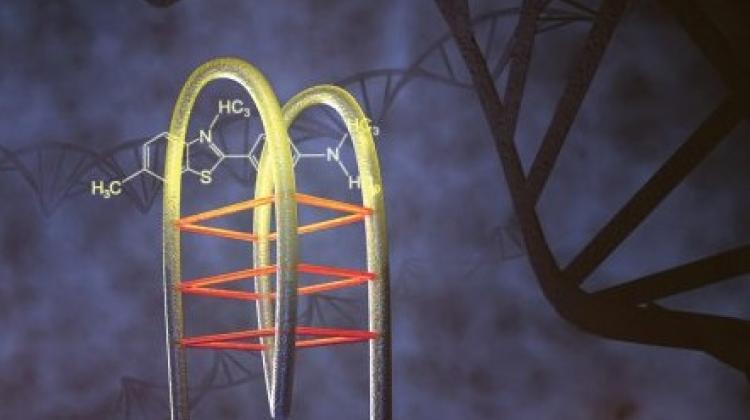Researchers crunch carrot DNA
 Sliced carrots presenting the range of the currently existing forms of carrots. Photo by Shelby Ellison
Sliced carrots presenting the range of the currently existing forms of carrots. Photo by Shelby Ellison
We now know why carrots are orange. International team of scientists - including researchers from Kraków - read DNA of carrot. This is just the beginning of research into the secrets of genes of this crunchy vegetable.
"We laid the foundations for carrot genomics. We managed to read and put together the genome of carrot. We now know that it contains 32 thousand genes" - said in an interview with PAP one of the authors of the publication, Prof. Dariusz Grzebelus from the Faculty of Biotechnology and Horticulture at the University of Agriculture in Krakow.
Scientists approached the task ambitiously. They did not stop after sequencing the genome of a single carrot, but also investigated the genome of more than 30 of its forms - both wild and cultivated. "On this basis we could determine the evolutionary history of the species" - said the researcher from the University of Agriculture. Research project led by American researcher Philipp Simon was published on May 9 in the prestigious journal "Nature Genetics".
"While we already know the genomes of dozens of other plants, this is the genome of one of the best quality plants" - said Prof. Grzebelus. He noted that it is quite important because carrot belongs to the celery family. This family that also includes celery, parsley, lovage, caraway, cumin and fennel. "These plant are important not only for economic reasons. Their taste, nutritional value and health benefits also matter" - noted the researcher. No genome of any species of this family has been sequenced until now.
CARROT WAS NOT ALWAYS ORANGE
"In addition, in our diet carrot is the main source of beta carotene - and hence vitamin A, which is important for our health. The main question was how the ability to accumulate the orange dye evolved in the plant" - said the scientist. He emphasized that the publication in the "Nature Genetics" explained the genetic mechanism that allows carrot to collects carotenoid pigments in the roots. "And this ability is not present in the wild ancestors of the edible carrot" - noted the researcher.
He admitted that carrots that we buy in stores today are genetically modified organisms. "The orange colour of the vegetable appeared only in XV-XVI century. Earlier, the roots of this plant were usually yellow or purple" - Prof. Grzebelus told PAP.
The researcher explained that there were indications that the carrot was domesticated approx. 5 thousand years ago in Central Asia. "We still do not know how carrot started to form edible granary root. Wild carrot has merely fibrous taproot" - said the researcher and added that sequencing of the genome of carrots would facilitate such research.
BIOINFORMATICS PUZZLE
One of the tasks of Polish researchers in the project was to test with the methods of cytogenetics (under a microscope) whether the individual DNA fragments were properly combined (using bioinformatics) into increasingly larger parts and assigned to the right chromosomes. Carrot genome consists of 473 million pairs of nucleotides (the basic building blocks of DNA). They had to be arranged in the right order using short fragments of only approx. 100 pairs of nucleotides. The work took four years.
In the next study, researchers from the University of Agriculture in Krakow now wants to answer the question of what is responsible for the shape of carrot root. "There are various types of carrot root: some are cylindrical, others - conical, and in older varieties there are also round roots, similar to radishes. We want to find out how this shape evolved" - says Grzebelus. Scientists also want to determine which genes are responsible for plant resistance to adverse environmental conditions such as water shortage or excessive salinity of the soil.
PAP - Science and Scholarship in Poland, Ludwika Tomala
lt/ mrt/
tr. RL
Przed dodaniem komentarza prosimy o zapoznanie z Regulaminem forum serwisu Nauka w Polsce.


















